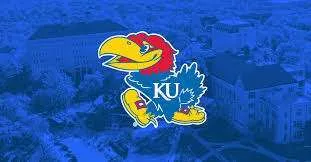From the Office of Public Affairs | http://www.news.ku.edu
Headlines
Researchers at CReSIS build radar system to extend range of ice surveys and close ‘data gaps’
LAWRENCE — Researchers at the Center for Remote Sensing and Integrated Systems, headquartered at the University of Kansas, have received almost $1 million from the National Science Foundation’s Major Research Instrumentation program to design and build an adaptable radar system for long-range unmanned aerial systems. With the new radar, scientists at CReSIS, the KU School of Engineering and other researchers will be able to gather more complete data on ice-sheet thickness in some of the most remote expanses of Antarctica and Greenland. The new system also could improve ice-discharge estimates and make it easier to routinely monitor snow cover on sea ice.
KU awarded grant to assist in bringing equity and excellence to introductory science classes
LAWRENCE — An interdisciplinary team of professors at the University of Kansas has received a $529,500 grant to improve student success and reduce achievement gaps in undergraduate science education. The grant is part of the Howard Hughes Medical Institute Inclusive Excellence 3 initiative, which challenges U.S. colleges and universities to improve student belonging and student success. The KU team also plans to develop a set of common problems centering on pressing community and societal issues that will be embedded in multiple introductory science and math courses.
Full stories below.
————————————————————————
Contact: Brendan Lynch, KU News Service, 785-864-8855, [email protected], @BrendanMLynch
Researchers at CReSIS build radar system to extend range of ice surveys and close ‘data gaps’
LAWRENCE — Researchers at the Center for Remote Sensing and Integrated Systems, headquartered at the University of Kansas, have received almost $1 million from the National Science Foundation’s Major Research Instrumentation program to design and build an adaptable radar system for long-range unmanned aerial systems.
With the new radar, scientists at CReSIS, the KU School of Engineering and other researchers will be able to gather more complete data on ice-sheet thickness in some of the most remote expanses of Antarctica and Greenland. The new system also could improve ice-discharge estimates and make it easier to routinely monitor snow cover on sea ice.
“This builds off what we already do at CReSIS with our sounding radars,” said lead researcher Emily Arnold, associate professor of aerospace engineering at KU. “The unique thing about the radar system we’re going to develop is it’s reconfigurable. It will have a common digital back end but a swappable RF front end. This radar will be able to operate over a much wider range of frequencies. Instead of having to design and develop three discrete systems, we can just design this one. Then, we could do a variety of missions looking at different parameters.”
The radar eventually could be deployed to a range of medium-sized UAS platforms from various manufacturers. But Arnold and her collaborators first will partner with Hollywood, Maryland-based Platform Aerospace. They plan to adapt the radar to the Vanilla UAS — a system ruggedized for cold weather that could greatly extend the range of research flights operated by scientists at CReSIS and other collaborations.
“We’re designing it to be platform-agnostic, meaning ideally you could put it on any small UAV platform,” said Arnold, who earned a recent CAREER award to integrate miniaturized radars onto a small UAS helicopter. “But this vehicle from Platform Aerospace has set several endurance records. By partnering with them on this grant, our plan to integrate our system into the Vanilla UAS. One thing you can’t really standardize is the antennas. You have the radar system — the electronics that generate the signal — but then you need something to emit that energy. That’s where the antenna comes in, but those tend to be more customized based on hard points available on the aircraft. So, we’re designing custom antennas for the Vanilla aircraft to support these operations.”
Most design and fabrication work on the new system will happen in-house at KU, according to Arnold. Six other senior KU faculty associated with CReSIS will join the project, along with collaborators at Michigan State University and experts from private industry.
“The electronics will be fabricated over at Nichols Hall on west campus,” Arnold said. “The antenna and pods are going to be made out of composite materials, so we’ll be able to fabricate those in our aerospace Composite Material Lab.”
Next, the KU researchers will team up with Platform Aerospace to integrate the radar into the Vanilla UAS and begin test flights of the systems at the firm’s proving grounds.
“They’ll be responsible for operating the vehicle while we operate the radar,” Arnold said. “For our initial flight test, we usually just fly over the ocean because the ocean provides a nice specular target to calibrate our systems — we’ll most likely fly over the ocean on the East Coast at one of Platform’s facilities.”
After assessing the new radar system’s operational readiness, the specialized UAS would take to the skies over Antarctica.
“For an initial field deployment, we’ll probably deploy out of McMurdo Station in Antarctica, which is the primary American base — they have established flight fields, and this is a well-controlled environment to deploy the vehicle from,” Arnold said. “But also under this grant we could spin off a lot of international collaborations, working with people from different countries who work from bases all over Antarctica. If we’re collaborating with them, we could operate from almost anyplace that has an appropriate runway for us across the continent. There are some international collaborators that we’re starting to talk to with about this — and we’d like to expand to more remote deployments.”
Such collaborations would allow researchers access to “highly remote Arctic and Antarctic regions at a much lower cost point than any manned platform,” according to the KU/CReSIS team. Fully loaded, the Vanilla platform can fly four days straight, although weather can often cut this short. Flying for two days, the Vanilla would cover about 2,850 miles, typically flying a gridded survey over a target. This range will give researchers access to “most regions with the largest data gaps” and extend their ability to monitor Arctic sea ice.
Arnold said the NSF grant also will support training of students at KU who will adapt the modular radar to the Vanilla UAS.
“I teach an aerospace manufacturing class, so I could take that pod, give them an outline of what it needs to look like, and then they would do design work as part of a class project,” Arnold said. “They would design all the details, analyze it to make sure it can withstand flight loads, and then actually fabricate a prototype. That’s beneficial for both the students and the research project. You get a head start on the engineering and basically just throw a tiger team at the problem. From the students’ perspective, it’s great because what they come up with has real-world applications. Maybe someday they might see a news story, and they’ll say, ‘Hey, that looks like our pod design.’”
KU personnel working on the grant include Richard Hale, chair and Spahr Professor of Aerospace Engineering and associate director of CReSIS; Carl Leuschen, professor of electrical engineering & computer science and director of CReSIS; Fernando Rodriguez-Morales, courtesy associate professor of electrical engineering & computer science; John Paden, associate scientist at CReSIS; and Leigh Stearns, professor of geology. Other collaborators are John Papapolymerou of Michigan State University and Anthony Jones.
-30-
————————————————————————
The official university Twitter account has changed to @UnivOfKansas.
Refollow @KUNews for KU News Service stories, discoveries and experts.
Tweets by KUnews
————————————————————————
Contact: Mike Welchhans, Center for Teaching Excellence, [email protected], @KU_CTE
KU awarded grant to assist in bringing equity and excellence to introductory science classes
LAWRENCE — An interdisciplinary team of professors at the University of Kansas has received a $529,500 grant to improve student success and reduce achievement gaps in undergraduate science education.
The grant is part of the Howard Hughes Medical Institute Inclusive Excellence 3 initiative, which challenges U.S. colleges and universities to improve student belonging and student success, especially for students who have been historically excluded from the sciences. KU will join 13 other institutions as a part of a learning community supported by $8 million in grant funds. The universities will collaborate on projects intended to make the content of introductory science courses more inclusive. The collaboration will focus on five overlapping areas: continuing education, inclusive curricula, student empowerment, inclusive collaboration and broader approaches to institutional transformation. A fundamental goal of the learning community is to shift institutions from deficit-based approaches that center on “fixing” students to achievement-oriented approaches that remove systemic barriers for historically underrepresented students.
The KU initiative, which began in November, is being led by Andrea Follmer (Greenhoot), a professor of psychology and the director of the Center for Teaching Excellence, and Mark Mort, associate director at the teaching center and professor of ecology & evolutionary biology. The team also includes faculty members from the departments of Chemistry, Geology, Physics & Astronomy and Mathematics as well as the Undergraduate Biology Program. Additional project support will come from the KU Center for Teaching Excellence and the office of Analytics, Institutional Research & Effectiveness, along with an advisory panel that includes KU faculty members who have scholarly expertise in diversity, equity and inclusion.
KU’s effort will analyze the cross-department components of science programs and identify areas for innovating teaching methods and course content. The team will use data on learning and student success to study how students move through introductory science and math courses. A central goal is to identify curricular barriers and opportunity gaps for underrepresented students, who often have inequitable access to high-quality STEM learning experiences before college. These activities will inform adjustments in the ordering and content of the courses students are required to take to help them make clearer connections from one course to another.
“I’m excited to use data to find out where are the barriers for our students,” Mort said. “When we know where the barriers are we can use inclusive pedagogy to shift to an achievement mindset rather than a deficit mindset to help students move through those barriers.”
The grant will help build on a decade of work at KU to transform large, introductory STEM courses with student-centered approaches known to improve learning for all students, Mort said.
The KU team also plans to develop a set of common problems centering on pressing community and societal issues that will be embedded in multiple introductory science and math courses. The common problems will allow students to learn how different disciplines approach real-world problems in such areas as water, pollution and sustainable energy. This approach will help students learn and apply core skills and concepts across courses and disciplines. It will also bring more socially relevant content into the science curriculum, a strategy that is known to foster greater connection to science among underrepresented students.
Follmer said, “I see an opportunity for students in general to do more academic work that enables them to find a sense of purpose in the learning and in their education, which I think is needed right now, especially for students who have historically been excluded from STEM.
“Adopting a more achievement, growth-oriented mindset about our students and our degree programs is going to benefit everybody in the system. I think this will support greater equity and a greater sense of belonging among students. And those outcomes will also be incredibly rewarding for instructors.”
-30-
————————————————————————
KU News Service
1450 Jayhawk Blvd.
Lawrence KS 66045
Phone: 785-864-3256
Fax: 785-864-3339
[email protected]
http://www.news.ku.edu
Erinn Barcomb-Peterson, director of news and media relations, [email protected]
Today’s News is a free service from the Office of Public Affairs





